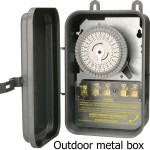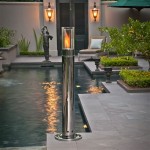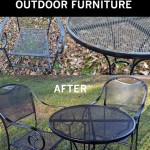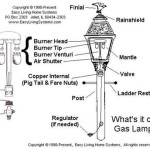DIY Outdoor Wood Burning Stove: A Comprehensive Guide
Building a DIY outdoor wood burning stove can be a rewarding project for those seeking a cost-effective and customizable heating solution for outdoor spaces. Whether the goal is creating a cozy ambiance on a patio or a practical cooking setup for camping, a well-built wood-burning stove can fulfill various needs. This article provides a comprehensive guide, exploring the intricacies of design, construction, and safe operation of a DIY outdoor wood burning stove.
Essential Materials for Construction
Selecting the right materials is paramount for ensuring the stove's durability, safety, and efficiency. The following materials form the foundational components of a typical build:
- Metal drum or propane tank: Serving as the stove's body, the drum or tank must be thoroughly cleaned and any residual flammable substances removed.
- Metal pipes and fittings: These components are essential for constructing the chimney and ensuring proper exhaust of smoke and gases.
- Metal sheet or plate: Used for creating the top of the stove, door, and other elements requiring a flat surface.
- Welding equipment and supplies: Essential for joining metal parts securely.
- High-temperature paint: Protects the stove from rust and enhances its appearance.
- Bricks or concrete blocks: These can be used to build a base for the stove, improving stability and safety.
- Door hinges and latch: Allow for controlled access to the firebox.
Design Considerations and Planning
Careful planning is crucial for the success of any DIY project. Key design considerations include:
- Size and Capacity: The stove's dimensions should align with the intended heating or cooking requirements.
- Location and Placement: Choosing a safe and appropriate location is paramount, considering factors like proximity to flammable materials and prevailing wind direction.
- Chimney Height and Diameter: Proper chimney design is essential for efficient draft and smoke evacuation.
- Airflow Control: Implementing mechanisms to control airflow is vital for regulating the fire's intensity and fuel efficiency.
Step-by-Step Construction Guide
While specific construction methods will vary depending on the chosen design, the following steps offer a general framework:
- Prepare the Drum/Tank: Clean the drum/tank thoroughly, removing any residual contents and ensuring the absence of flammable materials. Cut openings for the door, chimney pipe, and air intake vents.
- Fabricate the Door and Chimney: Using metal sheet and pipes, create the door and chimney components, ensuring proper fit and alignment.
- Assemble the Stove Body: Weld the chimney, door, and other fabricated parts to the drum/tank, ensuring secure and airtight seals.
- Build the Stand/Base: Construct a stable stand or base using bricks, concrete blocks, or other suitable materials.
- Install the Chimney: Securely attach the chimney to the stove, ensuring it extends to a safe height above the surrounding area.
- Apply High-Temperature Paint: Apply a coat of high-temperature paint to protect the stove from rust and enhance its aesthetic appeal.
Safety Precautions and Best Practices
Operating a wood-burning stove safely involves adhering to specific precautions:
- Clearance from Flammable Materials: Maintain a safe distance between the stove and any flammable materials, including vegetation, furniture, and structures.
- Proper Ventilation: Ensure adequate ventilation in the area to prevent the buildup of smoke and harmful gases.
- Fire Extinguisher: Keep a fire extinguisher or other fire suppression method readily available.
- Fuel Selection: Use only seasoned hardwood for optimal burning efficiency and minimal smoke production.
Maintenance and Care
Regular maintenance is key to the longevity and optimal performance of the stove:
- Ash Removal: Regularly remove ash buildup from the firebox to maintain airflow and prevent clogging.
- Chimney Cleaning: Periodically clean the chimney to remove creosote buildup, reducing the risk of chimney fires.
- Rust Prevention: Inspect the stove regularly for rust and apply touch-up paint as needed.
Alternative Designs and Modifications
DIY wood-burning stoves can be customized to fit a range of applications. Common modifications include:
- Adding a Cooking Surface: Incorporating a flat metal plate on top of the stove allows for cooking and boiling water.
- Incorporating a Water Heating System: Connecting a water tank to the stove enables heating water for various uses.
- Utilizing a Rocket Stove Design: This design enhances combustion efficiency and reduces fuel consumption.
Legal Considerations and Regulations
Before constructing and operating a DIY wood-burning stove, it's essential to research and comply with local regulations and ordinances. These may include restrictions on open burning, chimney height requirements, and other safety standards.

Plans How To Build A Wood Burning Outdoor Furnace Stove Outside

How To Make An Outdoor Wood Burning Stove Fireplace B Vintage Style

Diy Rocket Stove For Your Outdoor Cooking Needs The Art Of Doing Stuff

Plans How To Build A Wood Outdoor Boiler

Plans How To Build A Wood Outdoor Boiler

A Out Side Wood Stove That Works Great Outdoor Furnace Burner Burning

How To Build An Outdoor Stove Ep 4 Howtospecialist Step By Diy Plans

23 Diy Wood Stoves To Keep You Warm

Drum 26 Img 4623 In 2024 Wood Stove Diy

Wow Build A Beautiful Outdoor Wood Stove From Red Brick And Cement
Related Posts







